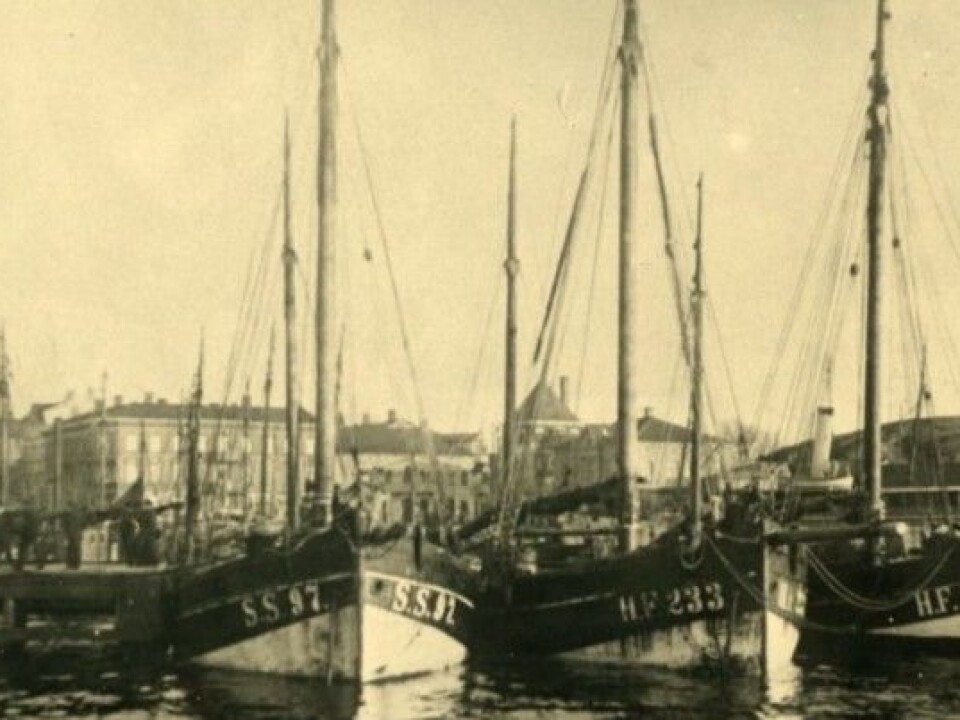
Alcohol’s role in the relationship between Sweden and Norway
Neighbouring countries often have interesting relationships— think France and Germany, or the USA and Canada. Norway and Sweden are no exception — especially when it comes to alcohol.
Norwegians and Swedes have a common ancestry and share languages that are so similar that they can mutually understand each other. But there’s one area where their relationship has taken some surprising turns, says Anders Gustavsson, a professor at the University of Oslo — and a Swede by birth.
That area, he says, is the relationship between residents of the two countries and alcohol.
Gustavsson's field of expertise is ethnology, or the study of different peoples and the relationships between them. He has studied the alcohol-related relationship between Norway and Sweden ever since the 1980s.
The Swedish ethnologist has investigated everything from old newspaper archives to the habits of Norwegians who travel to Strømstad, Sweden, just across the Norwegian border, to buy cheap meat and alcohol.
Alcohol once flowed from Norway

Gustavsson says until about a hundred years ago, it was primarily Swedes who came to Norway to buy alcohol.
In the early 19th century, Swedish border areas such Bohuslän, Värmland and Dalsland were poor communities on the outskirts of Sweden. For Swedish people who were poor, Norway was the land of opportunity. Many of them helped with the industrialization of Norway’s capital, Oslo, for example.
“A large proportion of Swedish workers who crossed the border at that time were unmarried men. In Norway, they encountered many temptations, including alcohol,” Gustavsson said.
Other Swedes crossed the border to sell animals and meat for a better price than they could get in Sweden. Much of the money they earned in Norway went to buy alcohol there. Some came home as broke as they left, the researcher says.
Prohibition resulted in smuggling to Norway

In Norway, spirits (or hard liquor) accounted for almost 80 per cent of alcohol sales at the beginning of the last century. A ban on spirits was introduced in December 1916 and lasted until 1927. Fortified wine and strong beer were also periodically banned.
In a 1919 referendum, almost two-thirds of Norwegians said yes to the ban on spirits. The support for the ban was greatest in western and southern Norway and least in eastern Norway. Similar bans — prohibitions —were enacted in the USA, Finland and Iceland, among others.
Sweden, on the other hand, did not introduce a prohibition on spirits. This made Sweden a perfect conduit for the flow of liquor smuggled from Germany to Norway.
Smuggling traffic peaked in 1923.

Smuggling was so extensive that Sweden was forced to expand the country's territorial waters beyond the Kattegat, so that Swedish customs officers could go further out to sea in search of smugglers.
Bartering with German soldiers
Then came World War II and the German occupation of Norway.
During the war, the border was closed. But the Germans brought alcohol with them to Norway. Sweden had chocolate and other goodies that German soldiers wanted. Thus, bartering began.
Shortly after the war, there were shortages in Norway. That meant Norwegians were the ones who travelled to Sweden.

But Norwegians who crossed the border in the early post-war years were only allowed to bring 50 kroner, Gustavsson said. Norway couldn’t afford to have its currency leaving the country. But Norwegians did have the ability to bring both legal and illegally distilled spirits with them to trade.
They used the spirits to barter or as a means of payment, in addition to the 50-kroner note they had for shopping in Sweden. On the way home, Norwegians crossing the border had to give a detailed account of how they had spent their 50 kroner in Sweden, Gustavsson said.
Accounting books and strikes
Among the more notable drivers of the cross-border alcohol trade was the situation in the early 1950s, when Swedes had to bring a special book to the government-owned liquor store, called the Systembolaget.
The book recorded everything you bought, with the goal of limiting purchases. That sent Swedes back over the border to Norway for alcohol. The only problem was that the nearest Norwegian state-owned liquor store was 50 km north of the border in Sarpsborg, Gustavsson said.

In 1978, 1982 and 1986, employees at the Vinmonopolet, the Norwegian state liquor store, went on a series of long-lasting strikes. That sent Norwegians in droves to Sweden to quench their thirst.
The longest strike lasted one hundred days. Enough Norwegians travelled to the Systembolaget in Strømstad that the Swedes established a separate liquor store to serve Norwegian customers.
Taxes down in Sweden, up in Norway
In 1992, Sweden reduced its taxes on alcohol, while Norway increased them.
“The Norwegian state wanted to have much higher taxes on alcohol than the Swedish state,” Gustavsson said. “When the Norwegian krone also strengthened strongly against the Swedish currency, it became even more attractive for Norwegians to buy alcohol in their neighbouring country.”

In 1996, the trade was so extensive that Systembolaget's special outlet for Norwegians in Strømstad became a permanent store.
Today, Norwegians, eager for a chance to buy cheap alcohol, continue to stream across the border — at least until some other factor causes the flow to reverse yet again.
----------------------------






























